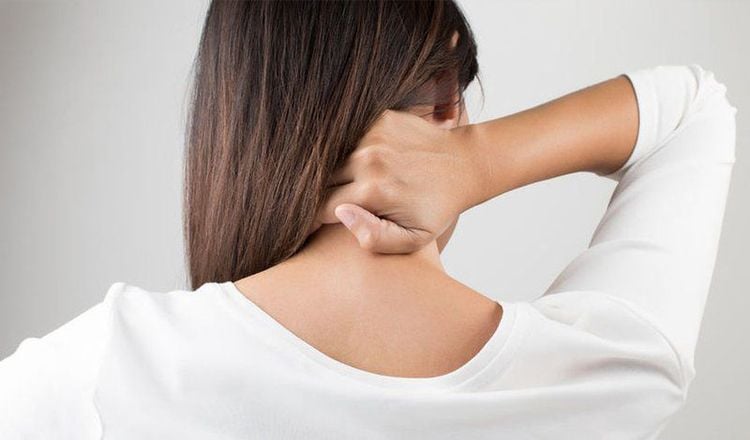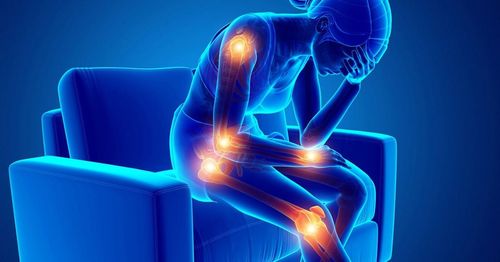This is an automatically translated article.
Tuberculosis of the cervical spine is an infection of the cervical spine caused by tuberculosis bacteria. Tuberculosis of the cervical spine causes destruction of vertebrae and discs, deforming the cervical spine, abscesses and compression of the cervical spinal cord. Decompression of spinal cord in cervical spine tuberculosis when a large abscess has formed or there is a compression injury.
1. What is cervical spine tuberculosis?
Tuberculosis of the spine, also known as tuberculosis of the spine, is an extrapulmonary tuberculosis disease, the most common in the musculoskeletal group. Tuberculosis of the cervical spine is an inflammation of the vertebrae and discs in the neck caused by tuberculosis bacteria.
In extrapulmonary tuberculosis diseases such as meningitis, peritoneal tuberculosis, and renal tuberculosis, tuberculosis of the musculoskeletal system accounts for about 20% of cases. In particular, spinal tuberculosis always holds the leading position in osteoarthritis, accounting for 25 to 87% depending on the time of statistics and research. In Vietnam, tuberculosis of the spine accounts for about 65% of cases of tuberculosis of the musculoskeletal system.
Tuberculosis of the cervical spine is mostly a secondary lesion, most often after pulmonary tuberculosis. TB bacteria, after passing through the lungs or gastrointestinal system, will follow the blood or lymphatic route to stay in a part of the musculoskeletal system. Tuberculosis of the cervical spine is caused by localized TB bacteria causing bone destruction in the cervical spine from C1 to C7.
2. Symptoms of cervical spine TB
2.1. Physical symptoms
Symptoms of cervical TB are mainly pain:
Pain fixed in place in the damaged cervical spine, pain in one position does not change. Symptoms of pain are continuous day and night, pain increases when moving, turning the neck, decreasing when resting; Pain relievers are rarely effective. Nerve type pain due to tuberculous lesions of the cervical spine causing compression on the branches of the nerve roots or the spinal cord. The pain radiates along the path of the roots and nerves, radiating down the shoulder and back of the neck. Pain increases with coughing, sneezing, or straining. There may also be a general TB infection syndrome that appears for many months, such as fatigue, loss of appetite, weight loss, low-grade fever in the afternoon,...

Triệu chứng tổn thương lao cột sống cổ là đau tại cột sống cổ
2.2. Physical symptoms
Clinical examination of patients with tuberculosis of the cervical spine may record:
Systemic symptoms: signs of TB infection such as fever, weakness, and combined TB lesions in more than 50% of cases (pulmonary tuberculosis, tuberculosis) pleura, tuberculosis, ...). The cervical spine is stiff, limiting the movements of bending, tilting and turning the neck because the muscles on both sides of the cervical spine are stiff. The cervical spine does not dilate when the head is lowered. If you knock on the posterior spine of the cervical spine, the patient will have sharp pain. The cervical vertebrae are posteriorly protruding, clearly visible when viewed from the side and gently stroked along the posterior spines from bottom to top. Tuberculosis abscesses of the cervical spine may protrude anteriorly to the posterior pharyngeal wall, as detected on pharyngeal examination, or the abscess descends to the supraclavicular fossa along the paracervical muscles. Cold abscesses are usually painless, tender, and may rupture with yellow discharge and pulp, leaving persistent ulcers and fistulas that are difficult to heal. Spinal cord compression syndrome: is the most serious complication of the disease, due to the destruction of cervical vertebrae and discs, subsidence, displacement and tendency to slide backwards, compressing the cervical spinal cord, which can cause paresthesia. arm, arm muscle weakness, and most severe quadriplegia.
2.3. Subclinical
Blood count test may show increased lymphocyte count. The erythrocyte sedimentation rate (VS) is increased in 95% of cases. The TB endodermal test (IDR) is positive in 90% of cases. X-ray of the cervical spine is very important in the diagnosis. Signs include: There is a narrow disc compared to other segments, the body of the cervical vertebrae is uneven, blurred on the upper and anterior part, creating a wedge-shaped lesion. In addition, the soft tissue around the cervical vertebrae is darker, heterogeneous, with calcifications, which is the image of an abscess. Computed tomography scans help detect early cervical spine lesions. Microbiology: needle aspiration of purulent fluid near the cervical spine for testing (direct endoscopy, Ziehl-Neelsen staining, culture) can find tubercle bacilli.
3. Treatment of tuberculosis of the cervical spine
Previously, in Vietnam TB of the cervical spine was a treatment challenge. Currently, with the development of medicine, we have found a cure for spinal tuberculosis in most cases if it is detected early when there are no serious complications.
3.1. Internally medical treatment
Use anti-tuberculosis drugs according to the correct regimen (oral or injectable). Patients need to drink continuously for a period of time, not arbitrarily stop taking the drug. A combination of pain relievers can be used to control pain. Rehabilitation: bed rest for 4 to 5 weeks, avoid lifting heavy objects, avoid rapid and sudden neck movements.

Điều trị tổn thương lao cột sống cổ dùng thuốc kháng lao theo đúng phác đồ
3.2. Surgical treatment
Surgery to decompress the spinal cord in tuberculosis of the cervical spine should be performed promptly. Indications of surgery include:
Tuberculosis of the cervical spine with spinal cord compression (by large abscesses, dead bones,...) causing complete or incomplete paralysis of the extremities. Tuberculosis of the cervical spine does not cause paralysis, but a large cold abscess compresses the esophagus and trachea. Subjects of patients applying decompression surgery in tuberculosis of the cervical spine such as:
Weak health Elderly people, children Co-ordinated TB damage of organs, especially when pulmonary tuberculosis has not been treated stably Spinal TB neck on HIV-infected people Pregnant women Patients who can not afford or refuse bone grafts, braces. Surgery to decompress the spinal cord in tuberculosis of the cervical spine needs to be combined with medical treatment measures, especially taking anti-tuberculosis drugs. Therefore, to ensure health, patients need to soon go to reputable and professional quality medical centers for examination and treatment.
Vinmec International General Hospital is the address for examination, treatment and prevention of diseases. When performing the examination process at Vinmec, customers will be welcomed and used modern facilities and equipment along with perfect medical services under the guidance and advice of experts. Good doctors, well-trained both at home and abroad.
Please dial HOTLINE for more information or register for an appointment HERE. Download MyVinmec app to make appointments faster and to manage your bookings easily.













